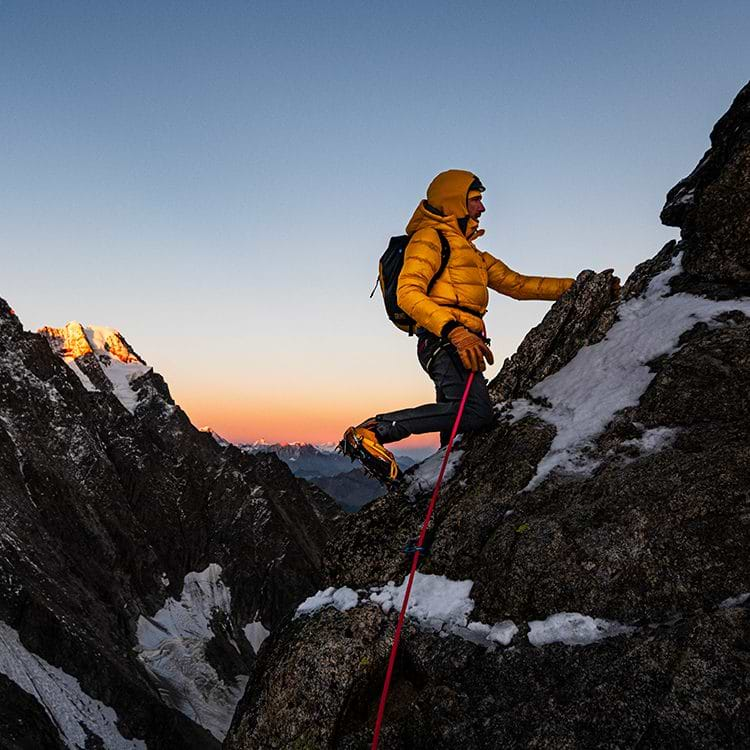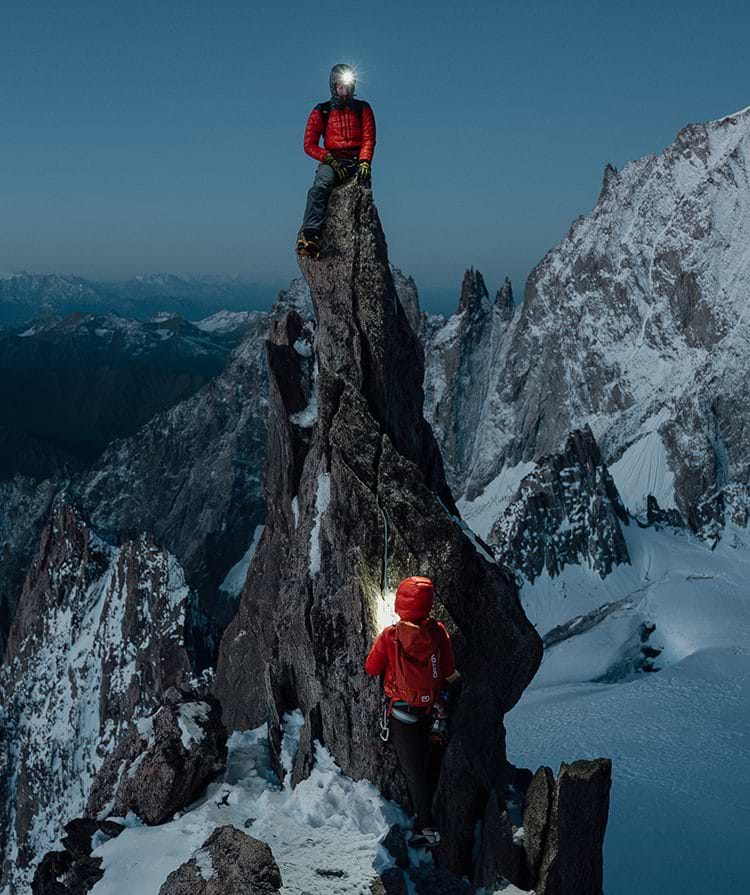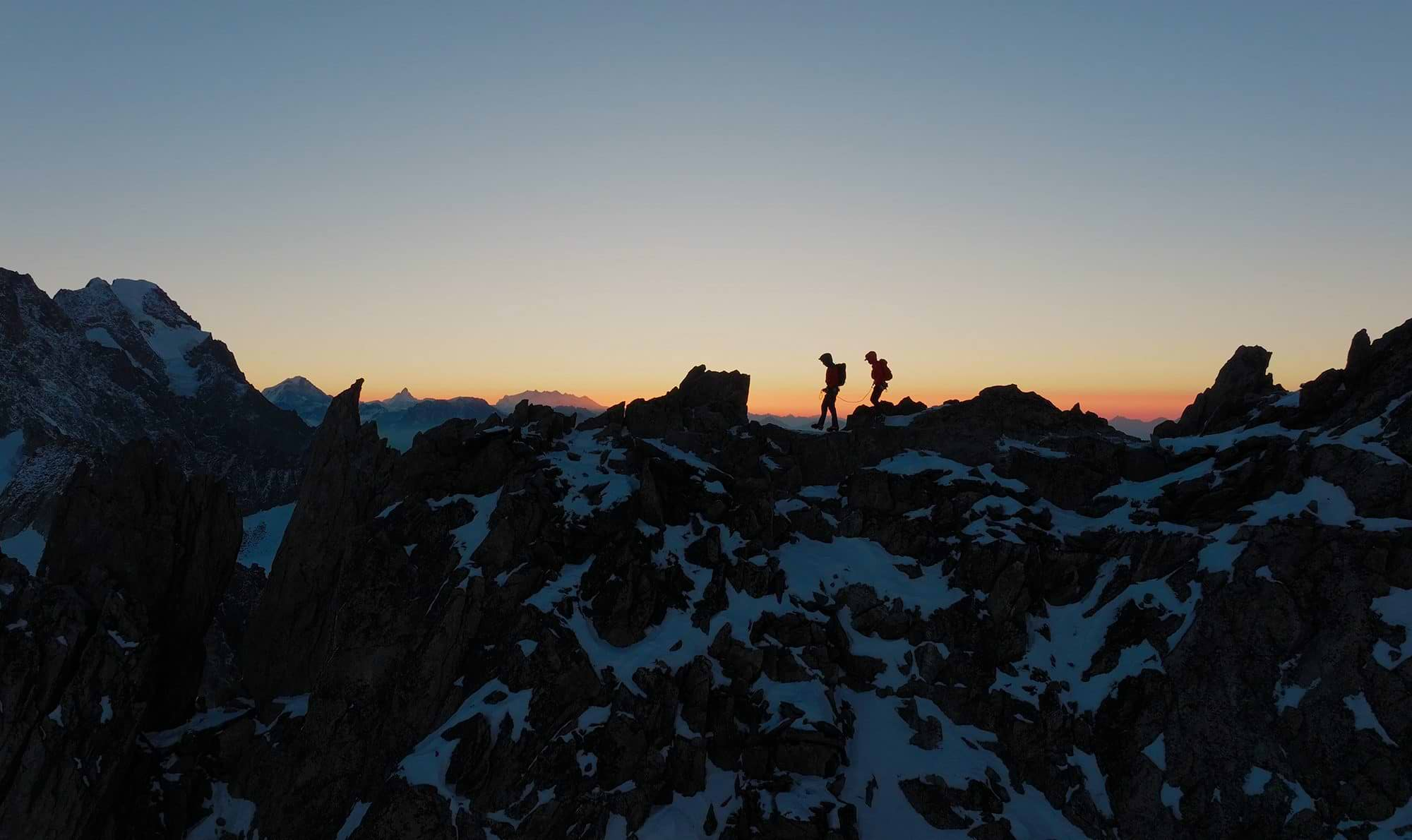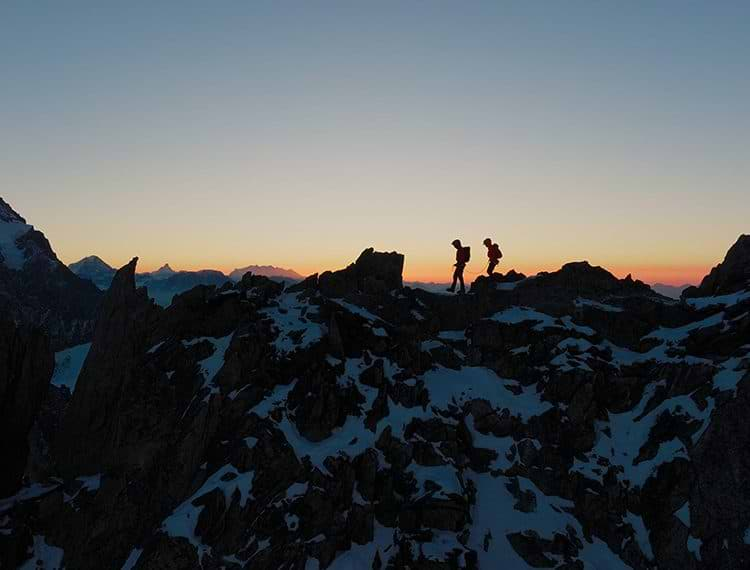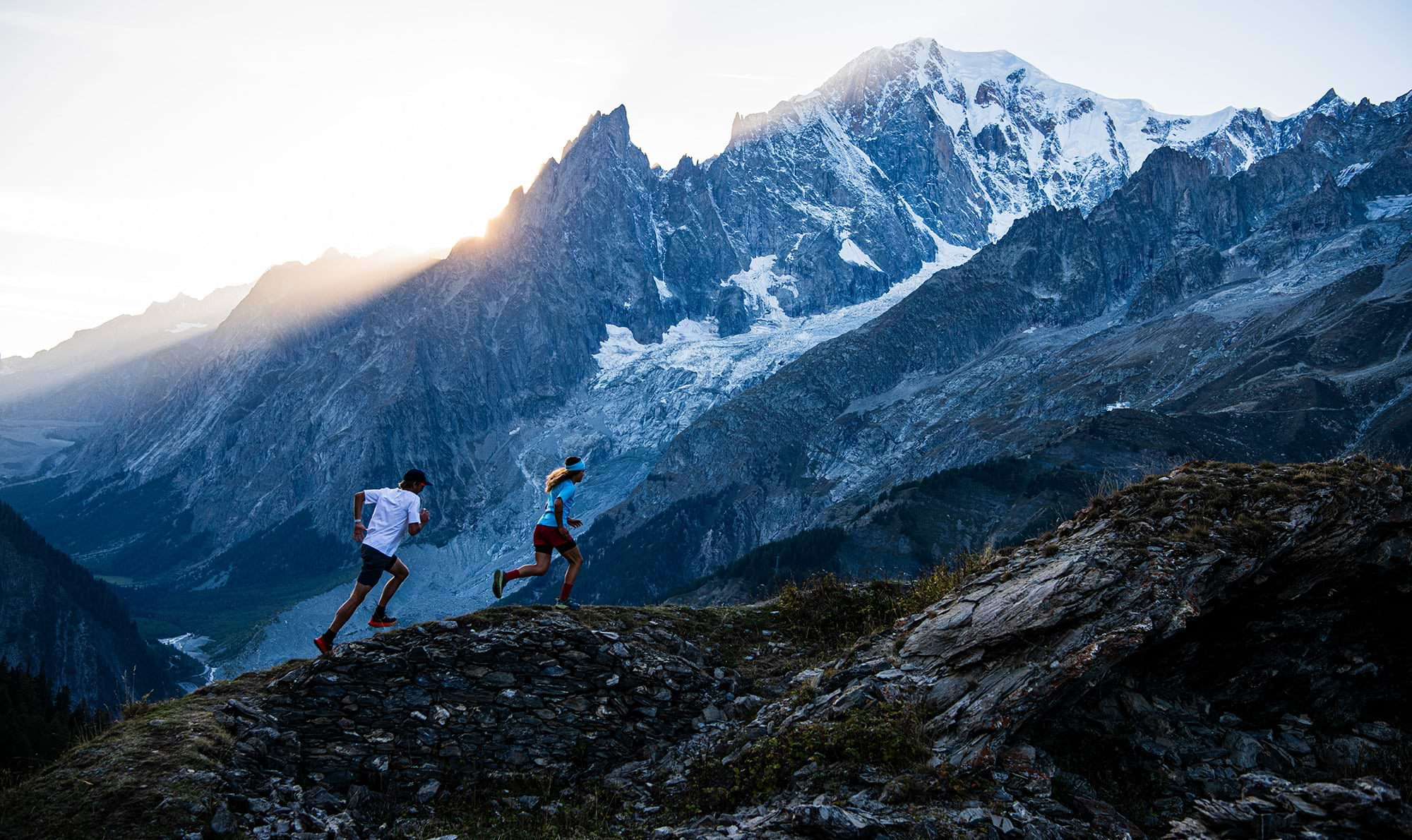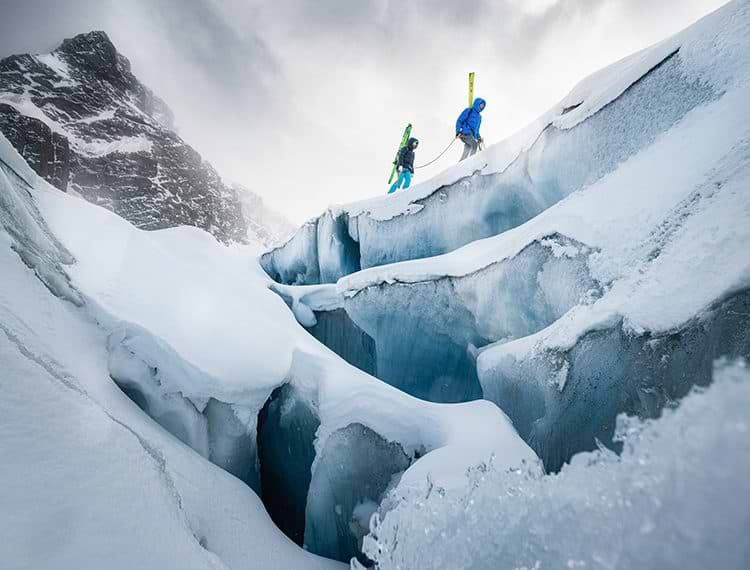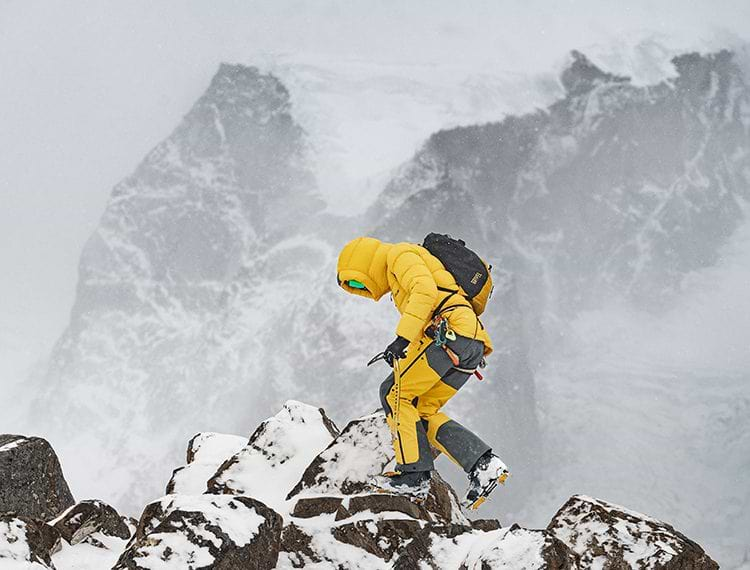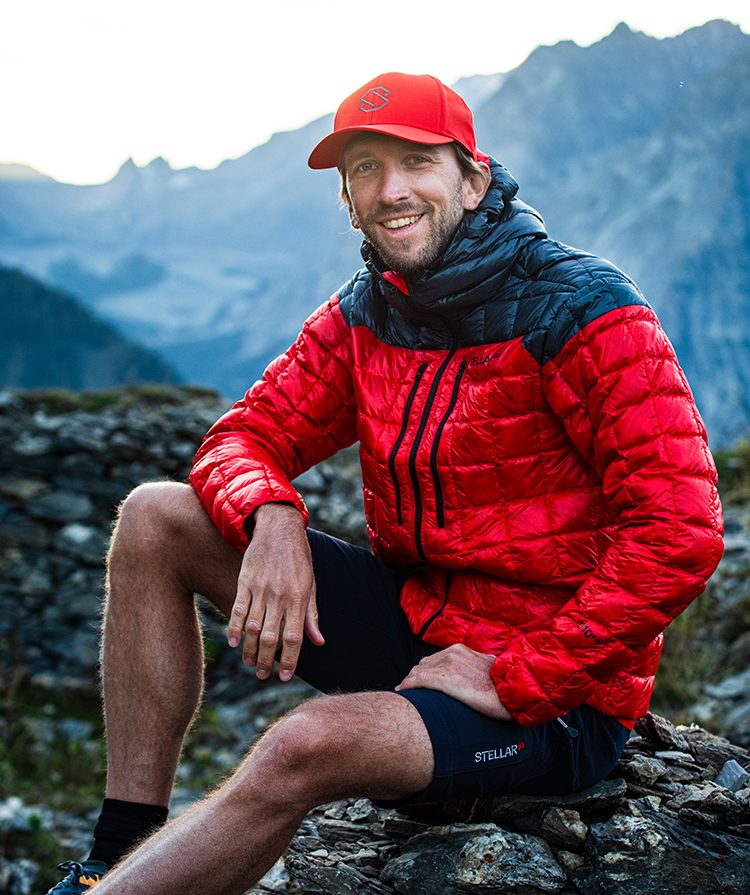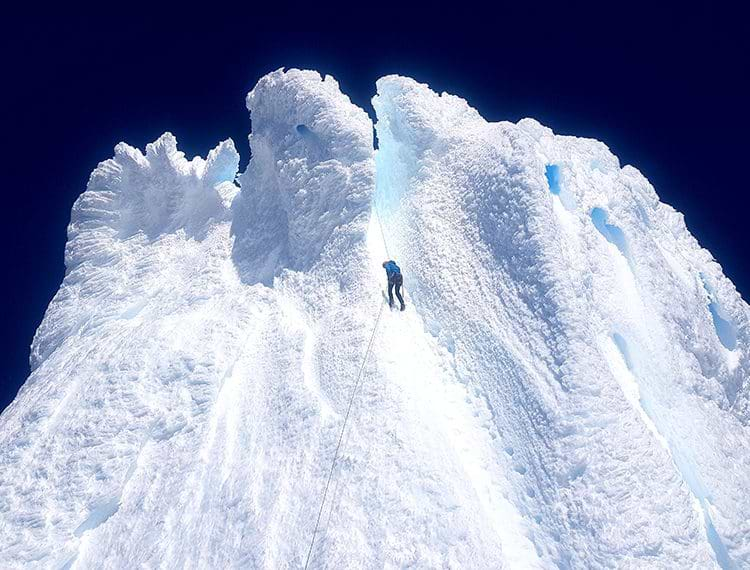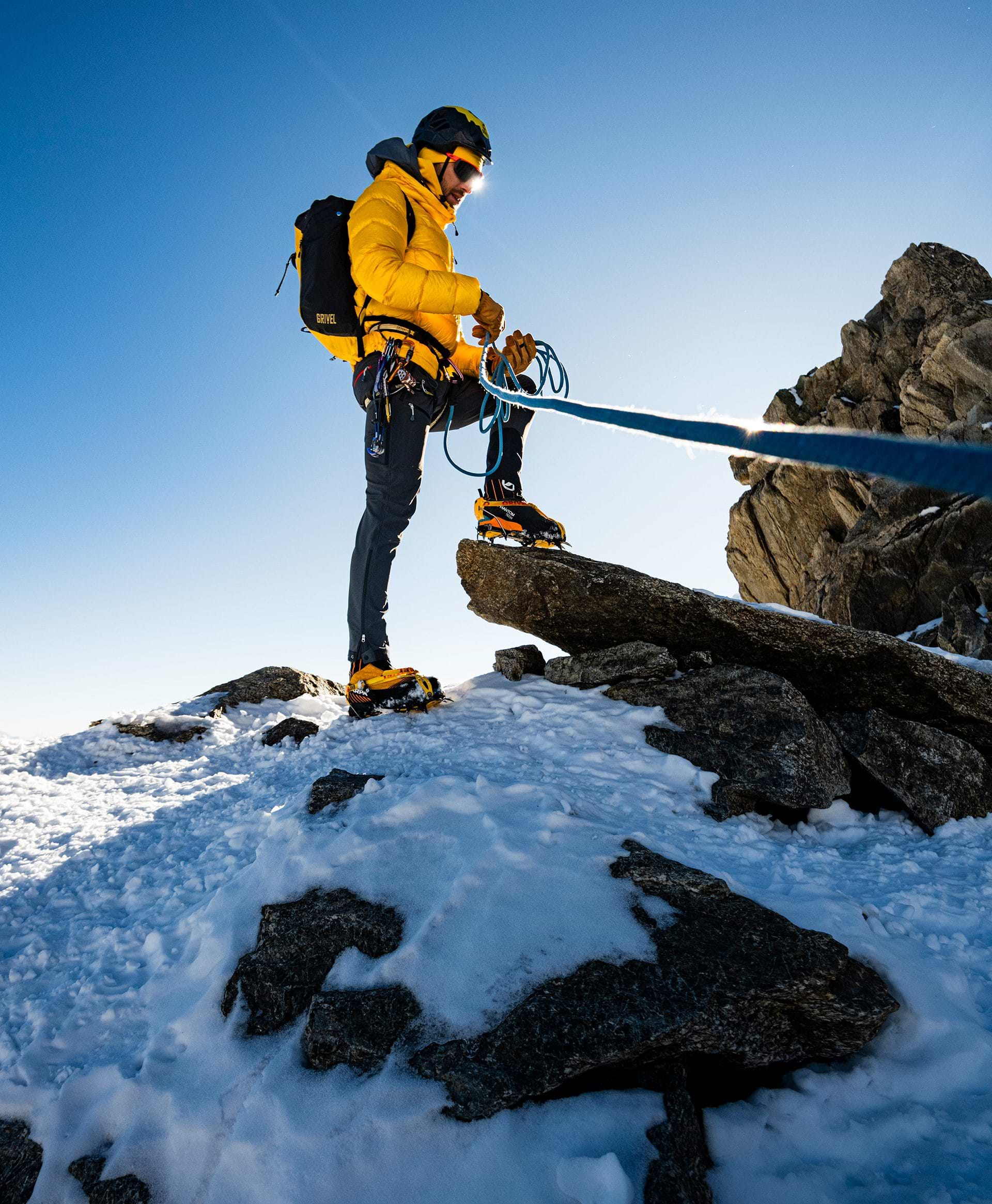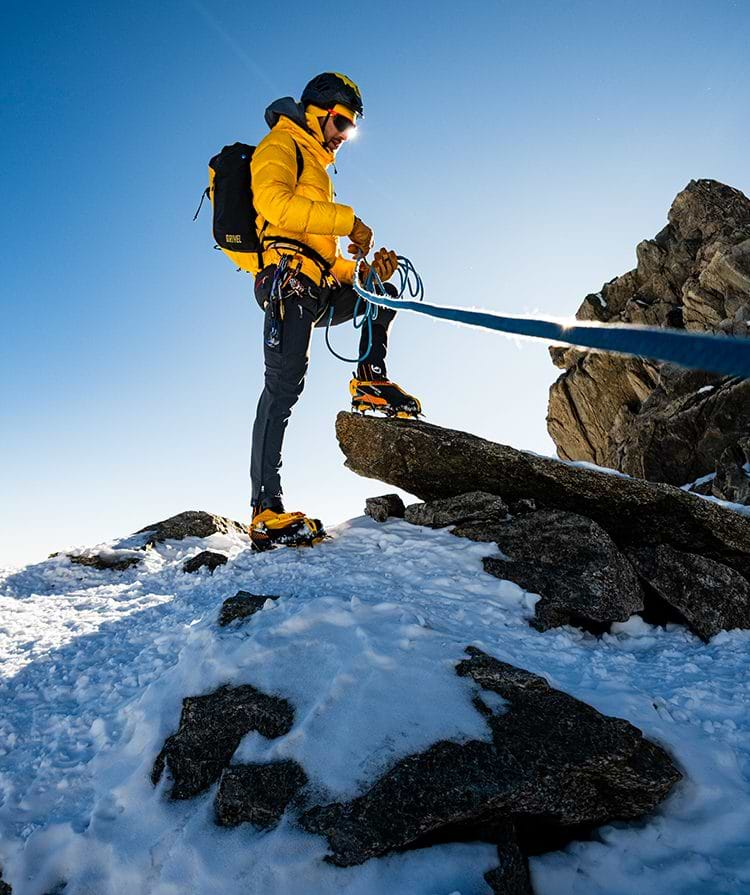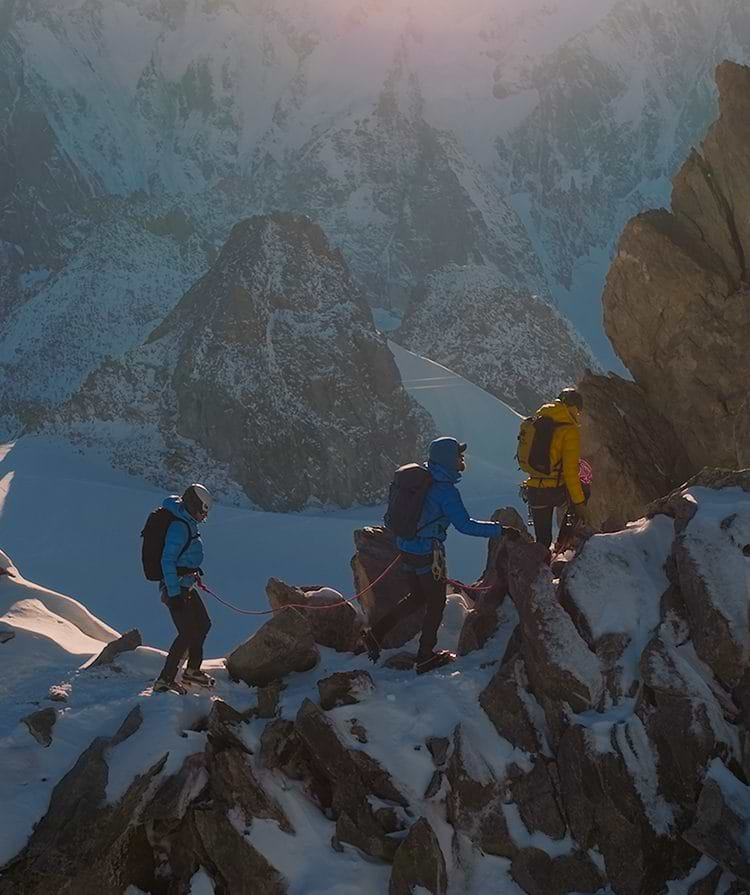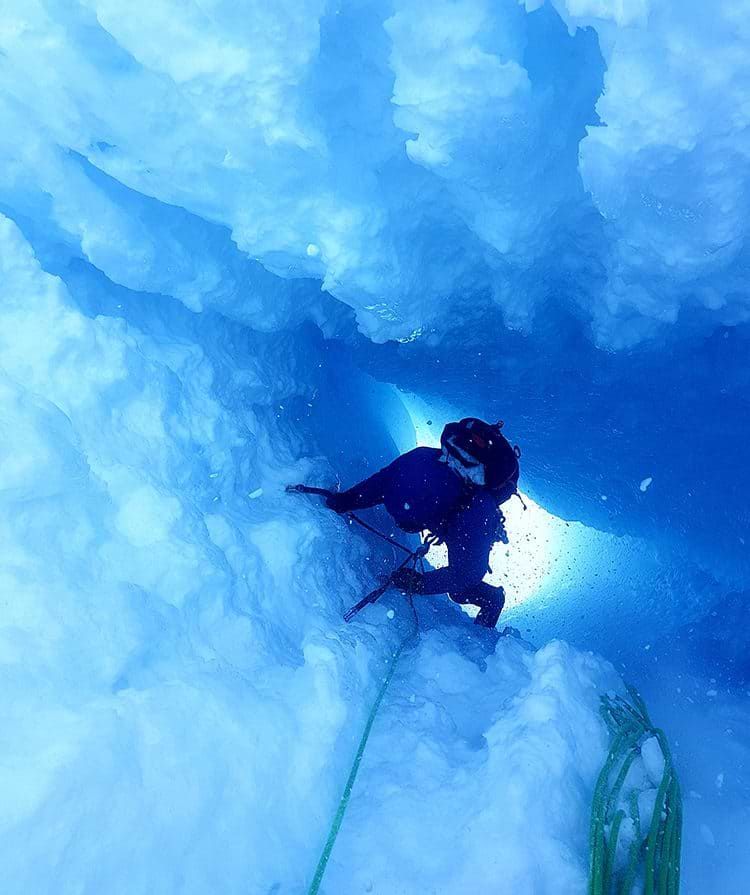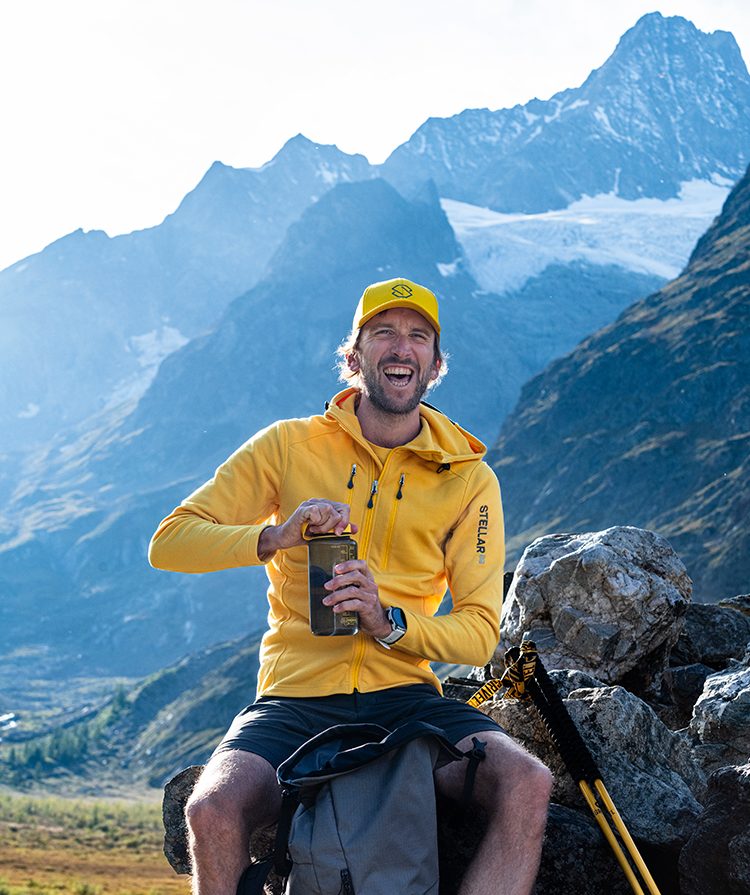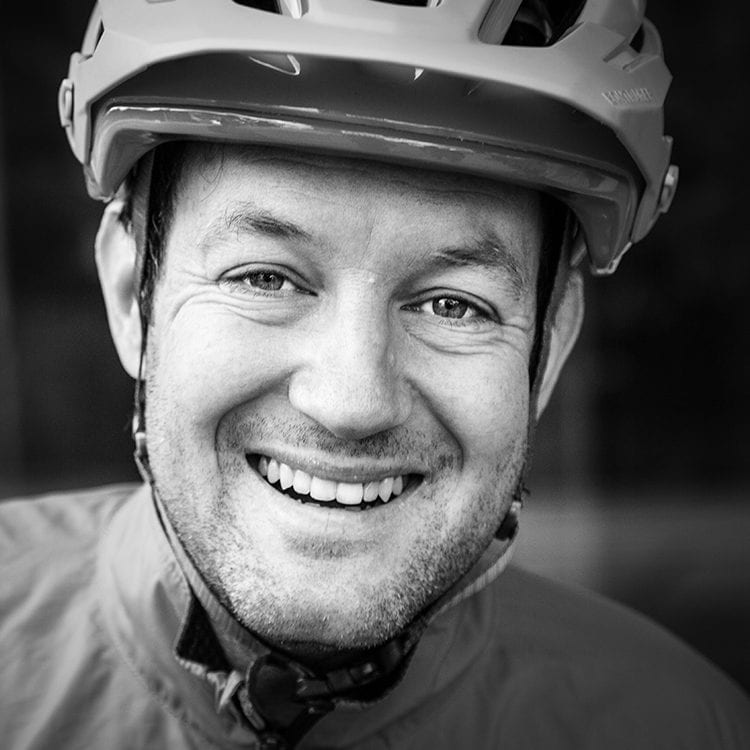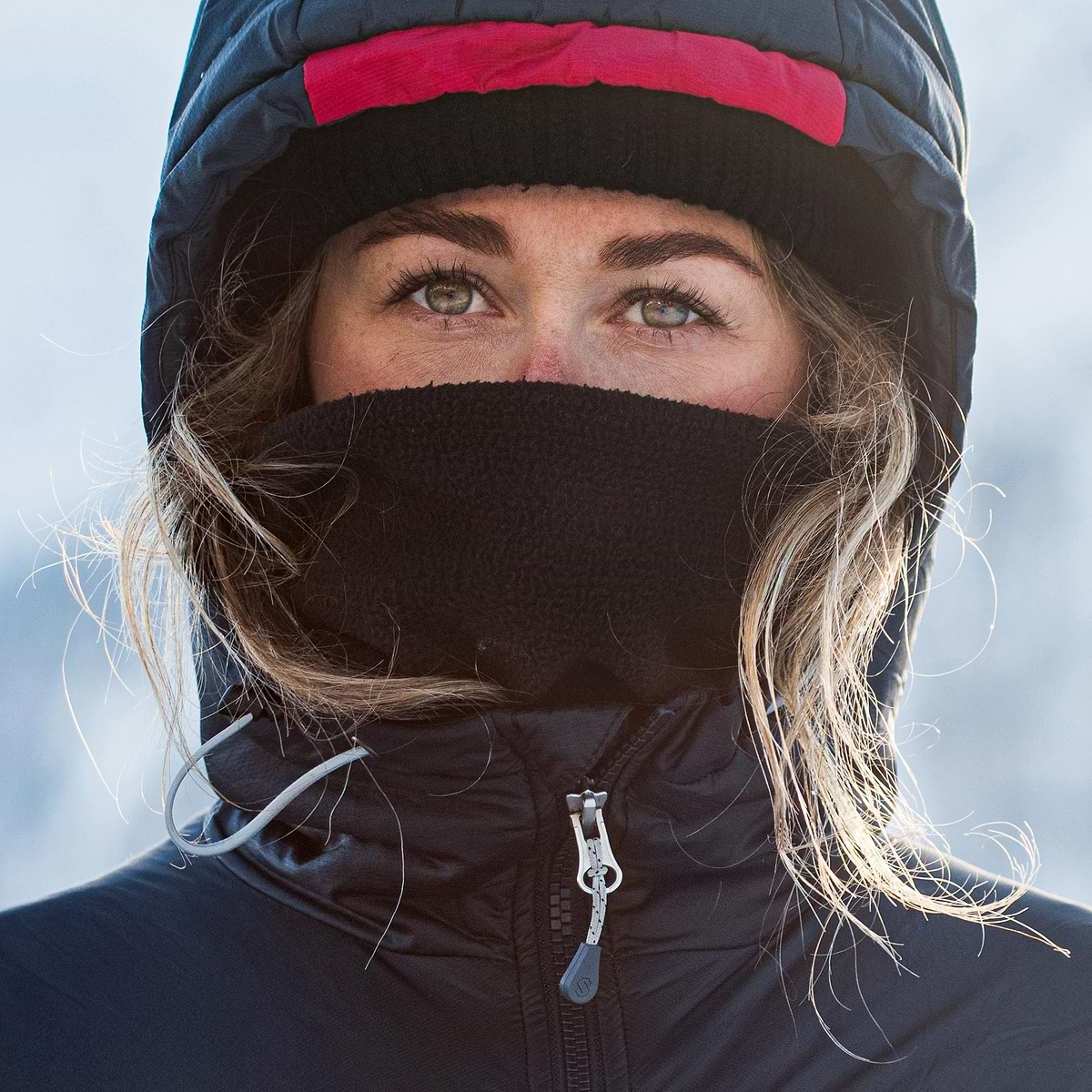Edoardo Albrighi seemed destined to become a banker in his hometown of London. Born to British and Italian parents who worked in the financial sector and indulged a passion for sailboats, Albrighi, the oldest of five brothers, grew up far away from the mountains. The mountains would likely have remained forever out of reach, but at the age of 16, Albrighi happened to take a mountaineering course in the Alps. Just as quickly, the mountains drifted away again as Albrighi completed his studies in London and interned at uninspiring investment banks. It wasn’t until joining a friend on a climbing trip in Piemonte, Italy, that Albrighi fell in love with mountain guiding inspired by his guides Iliano Fererro and Cilio Basinano.
The self-motivated 25-year-old saved up and spent the following five years in Italy’s Aosta Valley training for his mountain guiding apprenticeship and focusing his natural athleticism on classics like the Grande Jorasses, the north faces of the Matterhorn and Eiger, and the classic Mont Blanc test piece — the Peutery Integral — the longest ridge climb in the Alps. It took another five years to complete his IMFGA credentials, and once this benchmark was attained, it was time to test himself in the great ranges far from home.
During Albrighi’s 40-day pilgrimage to Patagonia in 2018, he managed successful ascents of Monte Fitz Roy, Cerro Torre and a handful of massive technical objectives completed in single pushes up to 26 hours. His love of fast, light, minimalist alpinism translated well to the fickle peaks of the Fitz Roy massif, where weather systems offer only a short window of climbable conditions, and fast equals safe. Even then, Albrighi had a broader definition of what ‘climbable’ meant than most.
His ascent of the aesthetic Franco-Argentinian route on Fitz Roy was plastered with ice from the high winds and required a hybrid ascent using a combination of hands and ice tools and rock shoes or crampons. The difficult conditions forced an unplanned bivi on the summit at 11,171 feet (3,405 metres) without food, water or sleeping bags, returning to tents shredded by savage winds at the base of the route. The famous summit mushrooms adorn the Cerro Torre crest, which defies gravity and requires equal ingenuity and boldness. Albrighi recounts, “The top of Cerro Torre was the most psychedelic climbing ever. It’s this overhanging soft snow with more than 3000 feet down to the valley below you without protection.” The descent from the summit was just as exhilarating as rappelling into the void on improvised anchors, which required filling empty dog food bags with snow.
That same year at a friend’s wedding, Albrighi rekindled an old flame from university, who just happened to be in finance, and married soon after. Aspects of an urban domestic life crept in. Still, Albrighi remained ambitious, taking inspiration from mentors Uli Steck and Killian Jornet by travelling to the Nepalean Himalayas to attempt a speed ascent on Manaslu — the eighth highest mountain on earth. As with Patagonia, the 2022 Himalayan climbing season was fraught with atmospheric instabilities, and despite training at 13,000 feet, Albrighi felt slow and sluggish on the trek to base camp. After a few days, around 16,400 feet, he began coughing blood and returned to Kathmandu for medical assessment. He was given antibiotics and, true to form, immediately returned to the mountain.
Although still lethargic, Albrighi reached 22,310 feet (6800 metres) before an extreme snowfall rendered the mountain unclimbable. During the descent, an avalanche swept down ahead of him, tragically ending the life of a Sherpa just a few metres below. This was the final straw that closed out an unsuccessful but educational Himalayan expedition. A few weeks after his return to London, Albrighi’s breathing remained laboured. After tests, specialists determined that he had a bilateral pulmonary embolism — blood clots that block and restrict blood flow to arteries in the lungs. His doctors were stunned that he had survived at altitude.
A slow recovery required nine months on blood thinners, which kept Albrighi from altitude for a while but allowed him to focus on his recently found passion for running. Never one to take an easy path, he was soon intrigued by sky running. Unlike trail running, which generally traverses the lower slopes of mountains, sky running involves running up easy to moderate mountaineering terrain to the summit and back down. It required experience and understanding of elevation, technicalities and terrain, and so was a perfect match for Albrighi’s finely tuned skill set. Today, the 39–year–old Albrighi competes in the sky running World Series with 14 races in Europe and additional events in seven countries off the continent. Currently based in Munich, Germany, with a young daughter, Albrighi follows the strict training schedule that is critical for success in competition. Despite a lifelong passion for training, running in the flatland is the most challenging part for him and can be painful and uninspiring. Still, Albrighi draws motivation from memories, “Being up at 13,300 feet, feeling like you’re moving well and fast is one of the best feelings I’ve ever had.”
Albrighi feels sky running has brought his life in the mountains full circle. “Mountains I started climbing on when I was young, training for the guiding course, taking clients up, now I’m training on them for running. It’s this beautiful evolution of how I interact with the terrain.” Not surprisingly, his objectives outside the race circuit focus on FKTs (fastest known times) and technical linkups combining peaks on some of the most iconic mountaineering routes in the Alps with little more than running shoes and a windbreaker. He also dreams of a return to the Himalayas — perhaps with a bit more than a windbreaker.

